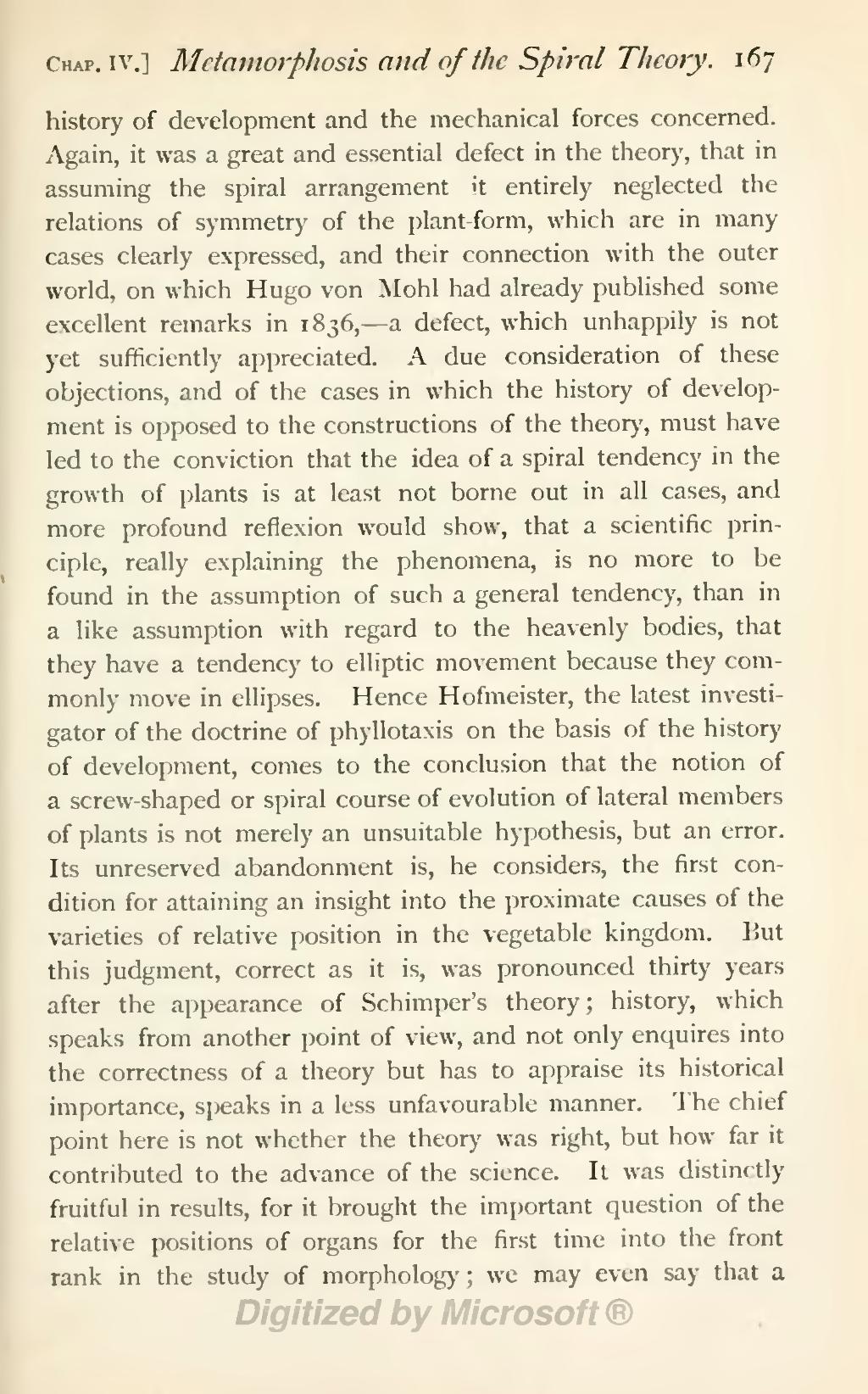history of development and the mechanical forces concerned. Again, it was a great and essential defect in the theory, that in assuming the spiral arrangement it entirely neglected the relations of symmetry of the plant-form, which are in many cases clearly expressed, and their connection with the outer world, on which Hugo von Mohl had already published some excellent remarks in 1836,—a defect, which unhappily is not yet sufficiently appreciated. A due consideration of these objections, and of the cases in which the history of development is opposed to the constructions of the theory, must have led to the conviction that the idea of a spiral tendency in the growth of plants is at least not borne out in all cases, and more profound reflexion would show, that a scientific principle, really explaining the phenomena, is no more to be found in the assumption of such a general tendency, than in a like assumption with regard to the heavenly bodies, that they have a tendency to elliptic movement because they commonly move in ellipses. Hence Hofmeister, the latest investigator of the doctrine of phyllotaxis on the basis of the history of development, comes to the conclusion that the notion of a screw-shaped or spiral course of evolution of lateral members of plants is not merely an unsuitable hypothesis, but an error. Its unreserved abandonment is, he considers, the first condition for attaining an insight into the proximate causes of the varieties of relative position in the vegetable kingdom. But this judgment, correct as it is, was pronounced thirty years after the appearance of Schimper's theory; history, which speaks from another point of view, and not only enquires into the correctness of a theory but has to appraise its historical importance, speaks in a less unfavourable manner. The chief point here is not whether the theory was right, but how far it contributed to the advance of the science. It was distinctly fruitful in results, for it brought the important question of the relative positions of organs for the first time into the front rank in the study of morphology; we may even say that a
